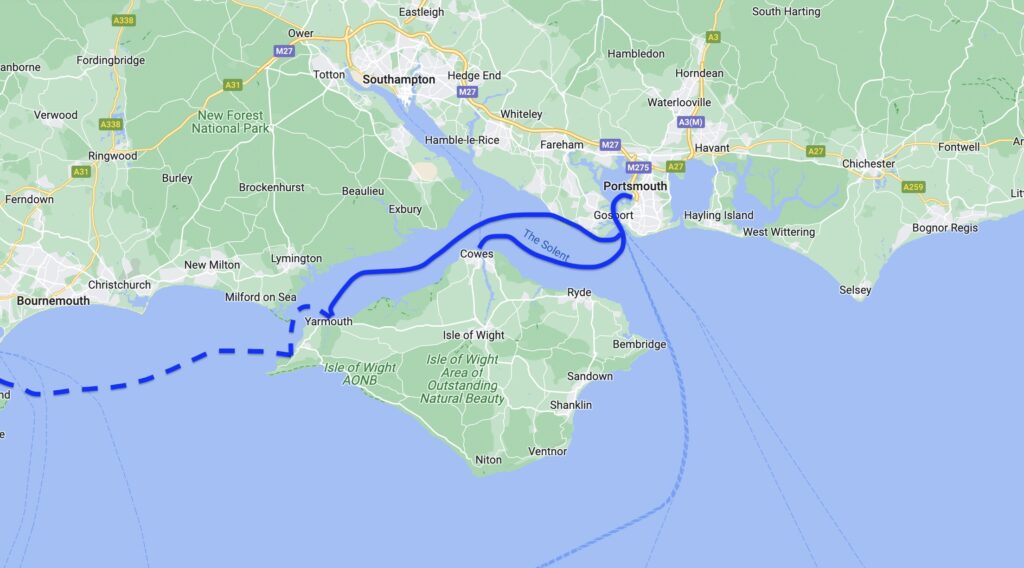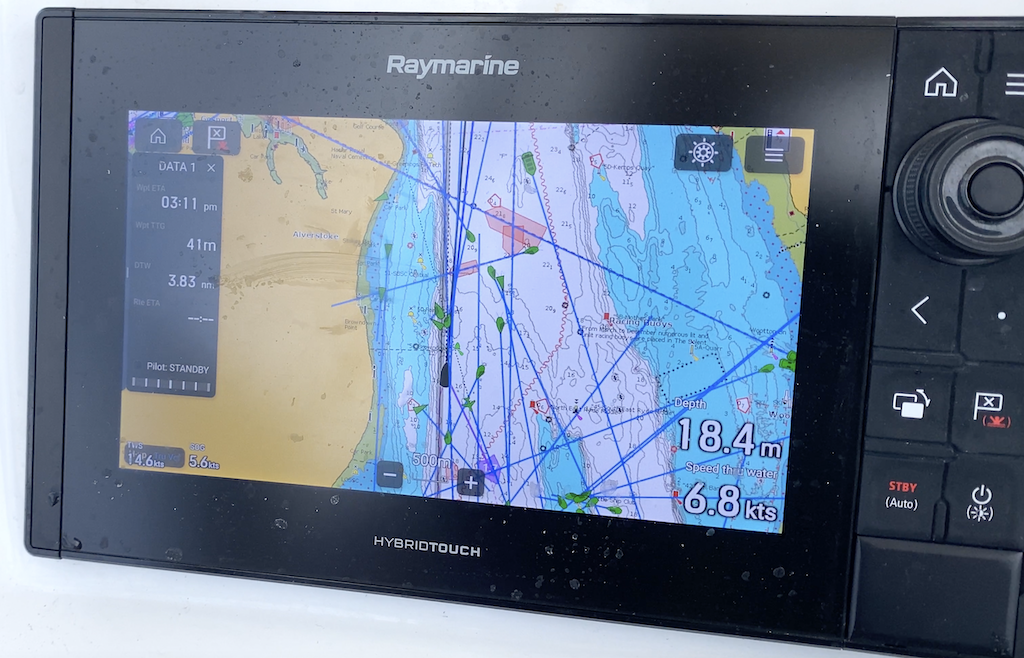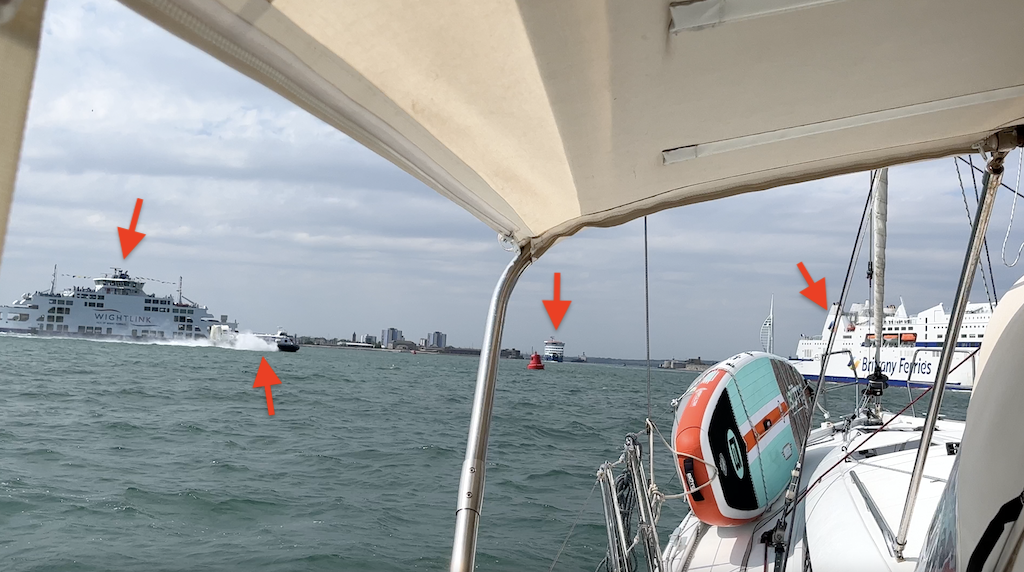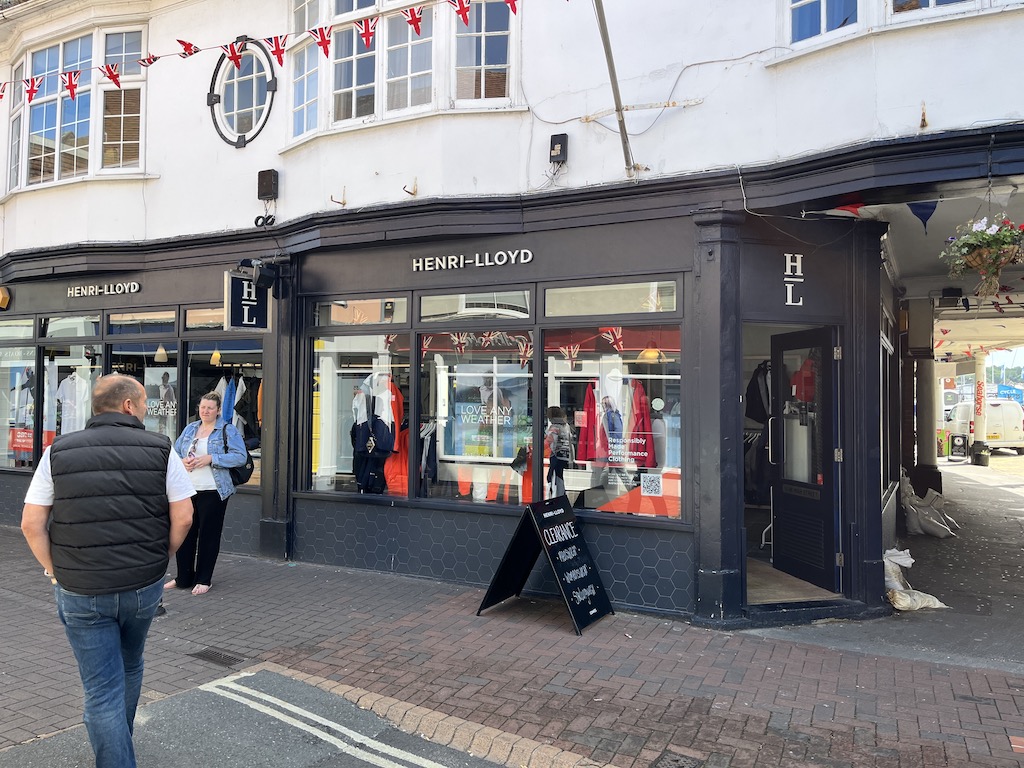Two summers ago, we met a nice British couple in Greece who were exploring the Mediterranean onboard their powerboat. We had a great evening, with much needed laughter and story swapping. But like many fellow boaters one runs into, you never know if you’ll see them again, and that becomes part of the accepted protocol. I would say it is akin to meeting the folks pitching a tent next to you at a campground, or fellow divers on a scuba expedition, or foodies at a cooking class. You share a common passion, but the reality of crossing paths again is pretty rare. This was the case with David and Allison. We kept in touch and at the start of the next summer, we re-united a couple of times as we collectively explored the Ionian Sea of western Greece. We then bid adieu as Karen and I started our accelerated pace west out of the Med. But they threw out a little carrot over dinner once that they were thinking of switching to be sailors. This was before today’s sky high fuel prices, so they were wise on multiple levels! After our warmup on being hosts to our friends Steve and Julie, we were ready to entertain more friends onboard Sea Rose.

David and Allison planned to take a train down from their home north of London and meet us at Portsmouth, the epicenter of the Solent, in two days. It was time for us to bugger out of the sardine factory that was Yarmouth Marina and sail upwind to Portsmouth. Did I mention earlier that this area is crowded with boats everywhere? Well, a picture speaks a thousand words, and this was the pick-up-sticks view of our chart plotter with criss-crossing AIS vectors as we cleared the marina.

The Solent, the body of water between the mainland and the Isle of Wight, has many masters. There are the individual boat owners like us sailing through for pleasure. These people are everywhere in the world of course, but here there are many more of them per square mile of water owing to good winds and interesting sights to see. Then, there are the cadre of racers. This includes not only the Cowes Week crowd, but sailors from many other regattas going on all summer long, as well as race training programs that setup temporary race courses which one can easily sail through without immediately becoming aware of it. Then there are the passenger ferries, running visitors out to the Isle of Wight. There are so many of these craft – big, small, slow and extremely fast – that you would think every hotel, bicycle, beach chair and restaurant on the island would be jammed full. There’s also the big commercial guys. These are the large freighters – from the ubiquitous containerships, the bulky-sided car carriers, and many lumbering tankers – that steam down the main channel right through the Solent, the big bully expecting everyone to clear out of their way. They do a dog leg turn at the western end to proceed north into the docks at Southampton. But the biggest bully of all is the British Royal Navy, on account of their stated mission, and the fact that one of their three largest bases is located in Portsmouth.
Against this backdrop is little ol’ 44 foot Sea Rose, fighting winds in the high 20’s and messy seas as we tacked upwind all morning to get to the Portsmouth channel entrance. I hadn’t even had enough time to stow the fenders and docklines from our stay in Yarmouth before being doused with water on the bow, losing one of our fenders overboard and gone out of sight in the blink of an eye. We agreed to a reefing plan of three reefs in the main and two in the jib. As soon as we killed the engine and got Sea Rose settled into her close-hauled course, the motion on the boat settled down too. As any sailor or powerboater will tell you, nothing is more unpleasant that motoring upwind into wind-whipped waves, rising up and crashing down repeatedly. We’ve been particularly happy with the design of our Jeanneau Sun Odyssey 440 and its hard chine hull shape. This angular shape running from the bow to the stern, instead of a continuous hull curvature, allows the boat to heel over and hold steady in bigger seas. It wasn’t making for a walk in the park, but we were holding our course and able to make steady progress upwind. The fact that we had a favorable current was also greatly appreciated. A few other hearty souls were tacking upwind nearby us, with a wide array of strategies. Some were diving in with full sails set, another was sailing with just their jib. Yet another, a catamaran close to shore, was thrashing their way upwind under power.

Karen and I took turns at the helm while the other person kept a close watch down below the sails for any boats tacking across in our path. I was happy that we were at least keeping pace with the motoring catamaran, and passing a few of the other boats sailing. It was a manageable 20 mile run to Portsmouth, with the wind easing a bit as we got closer and the current turning against us. A series of tall lights, like the towers of a wind turbine but without the blades, had been placed at the outer end of the Portsmouth entrance channel, which we learned later are used by the Royal Navy’s two aircraft carriers, HMS Queen Elizabeth and HMS Prince of Wales, as range markers. At a width of 240 feet these behemoths take up the entire channel and all vessels have to wait until they pass before entering or exiting. On account of events in Ukraine, we hadn’t seen many navy ships in port this summer, and these two carriers were no exception. Still, we had our hands full. As we came screaming down the channel on a spritely beam reach, debating about how long we could keep the fun going until we had to furl the sails, a large Brittany Ferries ship started coming out the channel. These are cruise ship-sized monsters that waste no time accelerating to speed their passengers and cars across the English Channel to France. This ferry was followed closely by an Isle of Wight ferry. Soon, we saw another Isle of Wight ferry returning from the island, with a high speed hovercraft ferry competing for first-to-the-dock. It was mayhem! You never saw me grind winches so fast to furl our sails!

Due to the narrowness of the channel, pleasure boats like ours are down several notches on the totem pole of priority. We were required to use the ‘Small Boat Channel’ that ran along the port side very close to the shore, marked on the chart and also with buoys. It felt a bit like we were household servants shuffling down a hallway in The Handmaid’s Tale, where decorum and saving space for their master’s passage was of utmost importance. We did as we were told! Once through the narrows, if you required passage across the channel to the other side like we did, where all the fun of downtown Portsmouth resided, you were required to hold precisely at a mark called the ‘Ballast Pile’ and once you received VHF radio approval from the Queen’s Harbor Master, Portsmouth’s VTS handle, you could move with utmost haste across the channel. We did as we were told, once again! The problem came when another ferry, this time an inner harbor service between Gosport (across the channel) and our marina destination, Gunboat Wharf, snuck in front of us and stopped. It was at most 30 seconds before the Queen’s Harbor Master (or QHM if you are a regular on these waters) hailed us again to question why it was taking us so long to clear the channel. When we explained the hard spot in front of us, he mustered a sliver of patience, but insisted we hug the outer pontoon of the marina and make our entrance at the earliest possible moment. We obeyed!
Gunboat Wharf is a thriving commercial, retail and marina complex, the product of a city council keen on restoring their downtown waterfront from a deteriorating shipyard and Navy barracks facility. Here for 60 years, until it was decommissioned in 1986, crews were trained onboard torpedo gunboats. If you were a Navy mine diver, you would have passed through these facilities as well, trained on how to both set and defuse mines. A fitting memorial was setup to commemorate their sacrifices. An old shipyard crane had also been restored and positioned adjacent to a small pond where kids and their parents could rent mini electric boats all painted and shaped like local watercraft, such as the Isle of Wight ferry, a Navy gunboat, and a search and rescue craft. While our priorities were a safe, comfortable marina from which to rendezvous with David and Allison, rather than a high end shopping mall and fancy restaurants, it was good to see a city make the bold step to invest what I’m sure was a King’s ransom to reinvigorate their downtown. Cleaning up any former government site, let alone Navy dockyards like these that contained 76 unexploded ordnances, was an impressive feat.

We slipped quickly back into our friendship with David and Allison, like no time had passed since we left them in Argostoli, Greece two years ago. We were back out the Small Boat Channel (with prior approval from QHM of course) and motoring into light headwinds when to my delight, Allison asked when we were going to sail! Our destination was the Cowes, the main harbor on the Isle of Wight, and with a 180 degree wind shift, we were now forced to tack upwind, with the added short straw of a counter current. But this did nothing to dissuade our aspiring new sailors. Winds were light, which can be helpful when you are teaching sailing terminology and technique, as sails flapping in the wind and the boat heeling 45 degrees is both distracting and frightening to newbies. I used to dabble in sail instruction when I was younger. Like any instruction, you have to find the words and the explanations that connect with a person’s frame of reference and prior knowledge. For sailing, some people immediately get the spatial relationship of a boat’s angle relative to the wind direction. Others need to see the sails luffing for it to make sense. Still others benefit from a classroom-style chalk talk. Regardless, it’s fun to see new sailor’s amazement on how a boat can sail upwind even in a moderate breeze.
Normally, our tacks upwind are at about 90 degrees, but with the counter current pushing us backwards, our tacks on this training day were closer to 120-140 degrees. Considering that at 180 degrees we would be making no upwind progress at all, we were making a lot of tacks for the short distance to Cowes. With the basic sailing concepts under their belts, they were left to learn the most important sailing lesson of all – patience!
Cowes welcomed us with a steady downpour of rain. Combined with the fact that it was Sunday, our options in the downtown retail section were limited to strolling until we found the one pub open that served food. These traditional English pubs have a lot of similar features. The ceilings are very low, there are exposed wooden beams at unusual non-90 degree angles (like our tacking earlier), and if you want service, you’d best walk up to the bar to order. But food and drink is only a backdrop to the rekindling of a friendship.

I expected Cowes, given its sailing mecca status, to be similar to our Newport, Rhode Island with its shiny, fancy race boats and shiny, fancy restaurants and a plethora of high-end retail shops to keep you looking fashionable as you are walking the streets. For sure, there were racing machines docked throughout the harbor, but the vibe was different. Here, the actual business of sailing was everywhere, from rigging shops, lifting cranes, sailmakers and chandleries. Chandleries, chandleries and more chandleries. It felt like you could get any repair done on any part of your sailboat here, and buy any replacement parts for anything you wanted to repair on your own. We were set for technical gear, but in the morning, when the skies had cleared and businesses re-opened for the week, Karen set out shopping for a pair of foul weather bibs (well, they call them salopettes here). She found a pair that fit perfectly and were designed specifically for women. In fact, she had at least three stores worth of inventory to choose from, all within a few blocks of each other on the same street. It was truly remarkable! And a wise choice given her propensity to get doused with seawater in the cockpit!






We were off and away from Cowes Shepard’s Marina to get David and Allison back to Portsmouth to wrap up their teaser of a sailing weekend. I was quite pleased that we not only had wind in our favor, but also the current. With the Code 0 doing yeoman’s duty speeding us across the Solent, we were back into the Small Boat Channel at Portsmouth in a jiffy. With no ruffled feathers from the QHM police, we were able to wrap up a great reunion with friends that, maybe if we are lucky, will someday be sailboat owners. Or powerboat owners. But sailboat owners would be really super cool!
Be sure to also checkout the video content on our LifeFourPointZero YouTube channel. We regularly post updates on our sailing adventures, as well as how to videos on boat repair, sailing techniques, and more!


Very early in our marriage, when we lived in Shrewsbury, MA, Larry & I hosted a couple from England with the names David & Allison. I know the names are pretty common, but wouldn’t it be something if it were the same David & Allison?!?
That is crazy Beth…I will need to check with them!!